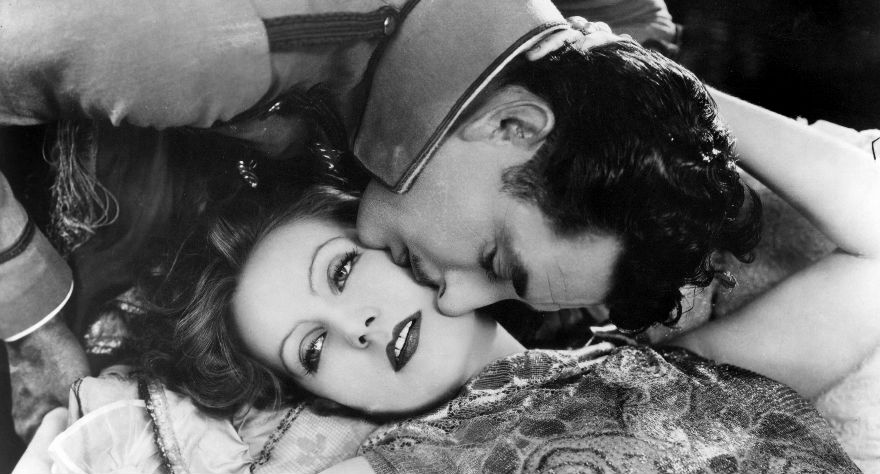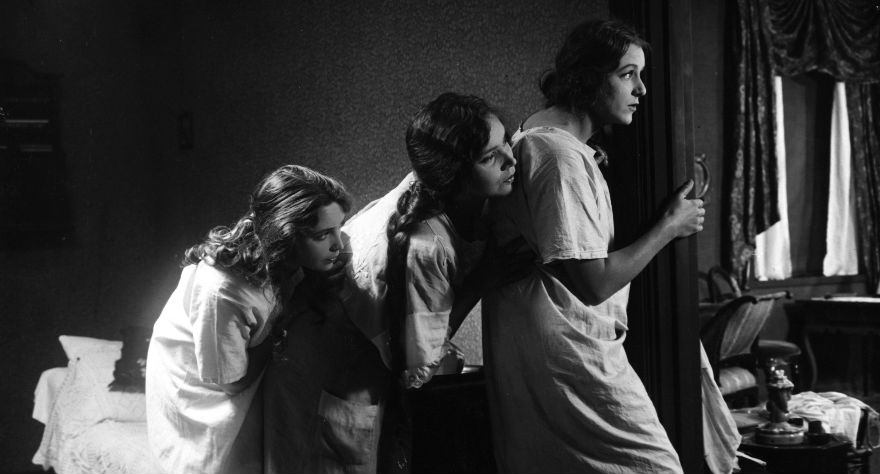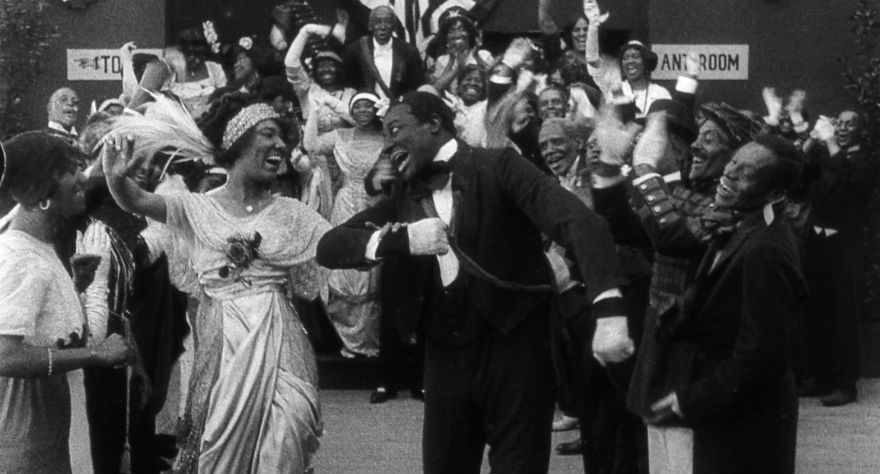Riches in Rarity: Anita Monga on the SF Silent Film Festival

Starting tomorrow, the San Francisco Silent Film Festival once again bestows upon the Bay Area some of the most rarified film experiences you’ll find in the world. It runs from May 28th-June 1st, and as always, the program is like a gilded treasure box lifted from the past, containing precious jewels you won’t find anywhere else.
Take, for instance, the special presentation of a film called Lime Kiln Field Day by Burt Williams. It was a 1913 production with an all-black cast that never saw the light of day due to its white producers slamming the door shut on it indefinitely. Jump forward one century to 2013, when MoMA found and reconstructed the film’s unedited reels so that we may enjoy and appreciate one of the earliest artifacts of black film history. The film will be playing as a special presentation called “100 Years In Post-Production: Resurrecting a Lost Landmark of Black Film History.” MoMA Associate Curator Ron Magliozzi will be presenting a variety of materials from the production as well.
Also on the lineup is the silent version of All Quiet on the Western Front, which many consider to be superior to the award-winning talkie version. Sherlock Holmes will be making an appearance as well in Sherlock Holmes, a pivotal piece of Sherlockian history once thought long lost. Contributing to the conversation of modern feminism are Why Be Good?, The Deadlier Sex, and Sweden’s Norrtullsligan, three films that serve as fascinating reminders that feminist filmmaking has had a long history. The Last Laugh, a must-see for any true film fan, also rounds out the program.
One of my favorite parts of the festival is the live instrumentation, and the lineup of musicians on-hand is typically tremendous. The world-renowned silent film players include Stephen Horne, Frank Bockius, Guenter Buchwald, Diana Rowan, Steve Sterner, Serge Bromberg, the Matti Bye Ensemble, the Donald Sosin Ensemble, the Mont Alto Motion Picture Orchestra, and Bruce Goldstein and the Gower Gulch Players.
I sat down for my annual chat with festival’s Artistic Director, Anita Monga, to talk about this year’s program and examine the silent era’s influence on modern filmmaking.
For more info on the festival, visit silentfilm.org

Farm-to-table dining is something that’s swept the nation but has always been a big part of San Francisco. It’s about artisans putting a lot of love and work and time into presenting the best ingredients with utmost respect. I think this festival is the film version of that, where everybody involved—the preservationists, the programmers, the musicians—really get their hands dirty to present an incredibly special experience.
Yeah, it’s a one-of-a-kind experience, each and every screening. People always say, “Aw, I’m not going to see The Last Laugh. I’ve already seen it a million times.” You’re not going to come to see it with the group of students from the Berklee College of music perform it once in your lifetime? Come on!
Right. I’ve seen some silents several times live, but it’s a different experience every time.
Absolutely. But I also have to say that masterpieces are worth revisiting again and again. There are some films that I’ve seen 20, 30 times. And it’s amazing to see them in a movie theater like the Castro with that amazing screen and people who also appreciate this live cinema. It’s an extraordinary experience. We’re very lucky in San Francisco.
We are. I was sharing a nice lunch with a friend here in the city today, and I was telling him that one of the best things about the festival is the crowd. Being with those people, you feel like you’re part of something special.
It really is special.
You mentioned masterpieces, and I’ve got to mention All Quiet on the Western Front. It’s interesting to me that the silent version is considered by many superior to the award-winning sound version.
That’s not completely unheard of during that transition from silent to sound. Films were often made in two versions because many theaters didn’t have the capacity to make that transition. We’re living through a relatively similar transition from 35mm to DCP. A lot of little theaters have had a really hard time making that transition because it’s really expensive. The answer during the transition from silents to talkies was that different versions were made. At the beginning of sound, it was very rudimentary. The silent version of All Quiet on the Western Front has a different kind of rhythm. It isn’t bogged down by the script.
The editing is the biggest difference.
Right, because you can’t have paragraph-long intertitle cards, so the story has to be told through the action and through the characters’ faces.
People seem to have forgotten what cinema really is. Most critique I hear from younger people is focused on the script or narrative rather than what’s actually on-screen. It’s like they’re writing a book review of the screenplay.
David Thompson wrote a piece for our book on All Quiet on the Wester Front in which he has a very poetic waxing. At the end of the essay he’s talking about ways of watching a film, and he did an experiment by watching sound movies with the sound turned off. Film is both a visual and aural experience. There are amazing things to be heard. When you have a modern film you think is being silent, if you pay attention, you’ll hear all of the sounds the filmmakers put in to suspend the film in a bath of sound.
Have you seen Mad Max?
I haven’t seen it yet! I’m so looking forward to seeing it.
I’m excited for you to see it because I think it pays homage to old-school movie-making. There are things like people wobbling on tall poles that really reminds me of Keaton and Lloyd. Really daring stuff.
That’ll be the first thing I see. I remember seeing the original Mad Max, and what a revelation that was.
I remember when you guys did the “Hitchcock 9” program, with all the silents he made. I loved it. I remember seeing a vignette where Martin Scorsese said he’d watch Hitchcock with the sound turned off.
Hitchcock is amazing, but I wouldn’t advise turning off Bernard Hermann’s score! [laughs] You watch a film like Vertigo, and there are whole parts of that movie that seem suspended in some kind of other world. There isn’t a lot of talking. The sound design of those movies is extraordinary. That “Hitchcock 9” thing we did was a real revelation to me because Hitchcock was at one of the earliest junctures of filmmaking. He was just born, fully formed as a storyteller.
I know Hitchcock mourned the end of the silent era.
Film is a marriage of technology and art, and any filmmaker would be happy with technology as it changes and enhances. The silent era was an incredible period for honing visual expression, but I think the best filmmakers embraced sound and technology. Who doesn’t want to be able to do something extraordinary that was impossible before?
Back to the festival: I just watched Cave of the Spider Woman. That was something else! The imagination on display was wonderful.
My mind boggles at how that print got to Norway. It was a very popular genre in Shanghai in the ’20s, that kind of spirit story. Films were made, but there are no prints left. This one was sitting in a library in Norway. The film was made in 1927 and imported and distributed around Norway in 1929. They burned the Norwegian subtitles on the cards, so the translations came from the Norwegians, not the Chinese. Our contribution was that we had a translator go back to the Chinese intertitles and translate those. The Chinese translator found that the frames were slipped, so the Norwegian subtitles would be printed on cards that would be flipped and upside down. It was a really difficult job.
This movie was a big hit when it came out, but there’s only the one print!
Right! Only one that we know of.
Sherlock Holmes is as trendy as he’s ever been right now.
The restoration we’re presenting was kind of the holy grail for Sherlockians because the person behind it was William Gillette, who convinced Arthur Conan Doyle to do this Sherlock Holmes film. It was years after Conan Doyle had killed off Sherlock, but Gillette was known as the major stage interpreter of Sherlock Holmes. He wrote a script that combined several of the Sherlock stories, and Doyle was impressed. That film was completely lost. A number of people went looking for it, and it was discovered in a vault at the Cinémateque Francaise.
I also caught The Deadlier Sex and loved it.
Good! That was a restoration that just happened at the Academy Film Archive. Blanche Sweet is pretty great. It’s a really small part, but it’s a really early role for Boris Karloff.
I love how nimbly that one switches from drama to comedy. It’s really modern in that way. Why Be Good is another one I really liked.
It’s really great. Colleen Moore plays an effervescent flapper, a “good girl” who the boss’ son falls in love with.
Feminism is such a hot topic today, as it should be. I think it’s important to look back at films like this to get a sense of how feminism has evolved over the years.
If you’re interested in that, Norrtullsligan has very strong female characters. It’s definitely a feminist film.

Let’s take a look at some other things on the program.
“100 Years in Post-Production” is going to be a really great presentation. Lime Kiln Field Day started production in 1913 and was shelved before it ever came to fruition. MoMA found the unedited reels of this all-black production. We all know what happened in 1915 with The Birth of a Nation, and it’s been speculated that that kind of put the kibosh on this film coming out. MoMA reconstructed it. Don’t miss Flesh and the Devil, don’t miss Pan…
I’m really excited for that one.
I love this film so much. It has a very strong, modern psychological sensibility that will be really surprising and revelatory to a lot of people.
As a bit of a musician myself, I always try to sit close to the musicians during the show. You can feel the sound from their instruments wrap around you in a really magical way.
Do you ever watch the musicians?
I do!
It’s so interesting. We have this wonderful photographer, Pamela Gentile, and my favorite thing she does is take a picture from the audience; you see the screen, the musicians, and sometimes you’ll see the musicians looking up and the characters in the film looking down. It’s beautiful.
For people who say things like, “I don’t want to watch old movies,” I say, at the very least, you can just watch the musicians. They’re incredible.
People who say they’re going to be put off by things being old…I get where they’re coming from. Some people have a problem with seeing a black and white film. I can tell you that you’ll forget that they’re not talking. Plus, there are plenty of bad films made in the silent era; we just don’t play those films. We have 20 films we’re showing every year. We don’t have to show the bad stuff. We try to show a breadth of the silent era, but every film has some relevance for modern audiences.
